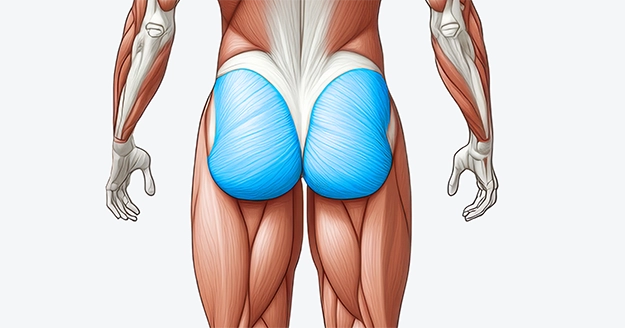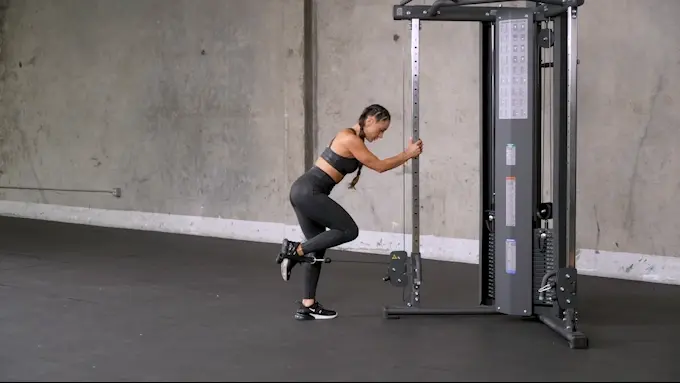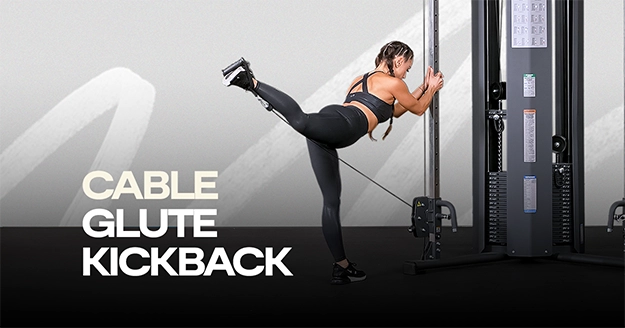Exercise Profile
Cable Glute Kick Back Overview
The cable glute kickback mainly works the gluteal muscles, helping to strengthen the posterior chain.
Beginners can use this exercise to activate and strengthen their glutes with controlled resistance, while those at an advanced level can increase the weight to make it more challenging.
This exercise can easily be added to lower-body, glute-focused, or full-body workouts. It’s also perfect for warming up the glutes before heavier compound lifts.

Cable Glute Kick Back Instructions
Here’s a glute kick back guide, including how to use a glute kick back machine:
Step 1: Set the pulley at the lowest setting, attach an ankle strap to the cable, and select your resistance. Face the machine and place the attachment on one ankle.
Step 2: Hinge at the hips and lean your torso forward. Then, grip the machine using both hands and keep your neck neutral.
Step 3: Squeeze your glutes, then lift your working leg backward with control. Pause at the top.
Step 4: Then slowly lower your leg back to the starting position.
Step 5: After completing the prescribed number of repetitions, repeat the process for the opposite side.

Common Cable Glute Kick Back Variations
Glute kick back exercise is a great way to work on your glutes; you may customize the variation to change the intensity or target other muscle groups. Here are five glute kickback variations to include in your routine:
Cable Glute Kick Back Tips
- Focus on activating your glutes and core to maintain stability throughout.
- Keep your movement slow and controlled, especially during the lowering part of the exercise, to prevent momentum from taking over.
- Keep your leg straight or slightly bent as you extend it back, making sure you’re pushing through the heel to target the glutes.
- Don’t kick your leg too high, as this may shift the focus away from the glutes and create unnecessary strain on your lower back.
Cable Glute Kick Back Common Mistakes
- Too Heavy: Lifting too much weight on the machine often leads to compensating with other muscles, reducing the effectiveness of the exercise.
- Arching the Back: Failing to engage the core can result in arching, leading to a lower back injury.
- Overextending the leg: Just like arching the back, kicking the leg too high shifts the focus away from the glutes to the lower back, which creates unnecessary stress.
Frequently Asked Questions
Why does my back hurt doing cable kickbacks?
If you get lower back pain during kickbacks, it’s probably because you overextended your leg or arched your back to much.
How effective are cable kickbacks for glutes?
If performed correctly, cable glute kickbacks can effectively target your glutes.
How high should I kick my leg?
Kick your leg back until your glute is fully contracted, but avoid overextending or lifting too high to prevent lower back strain.
Post your post-workout selfies in IG and tag @trainestapp, #trainest, or DM them to us to get a shoutout on Trainest Stories!


